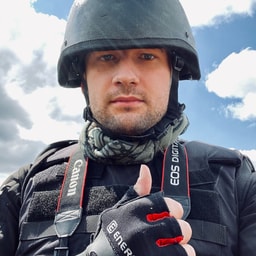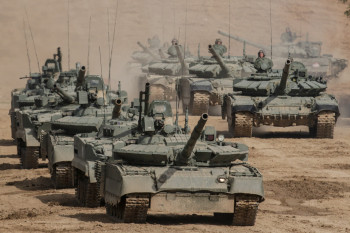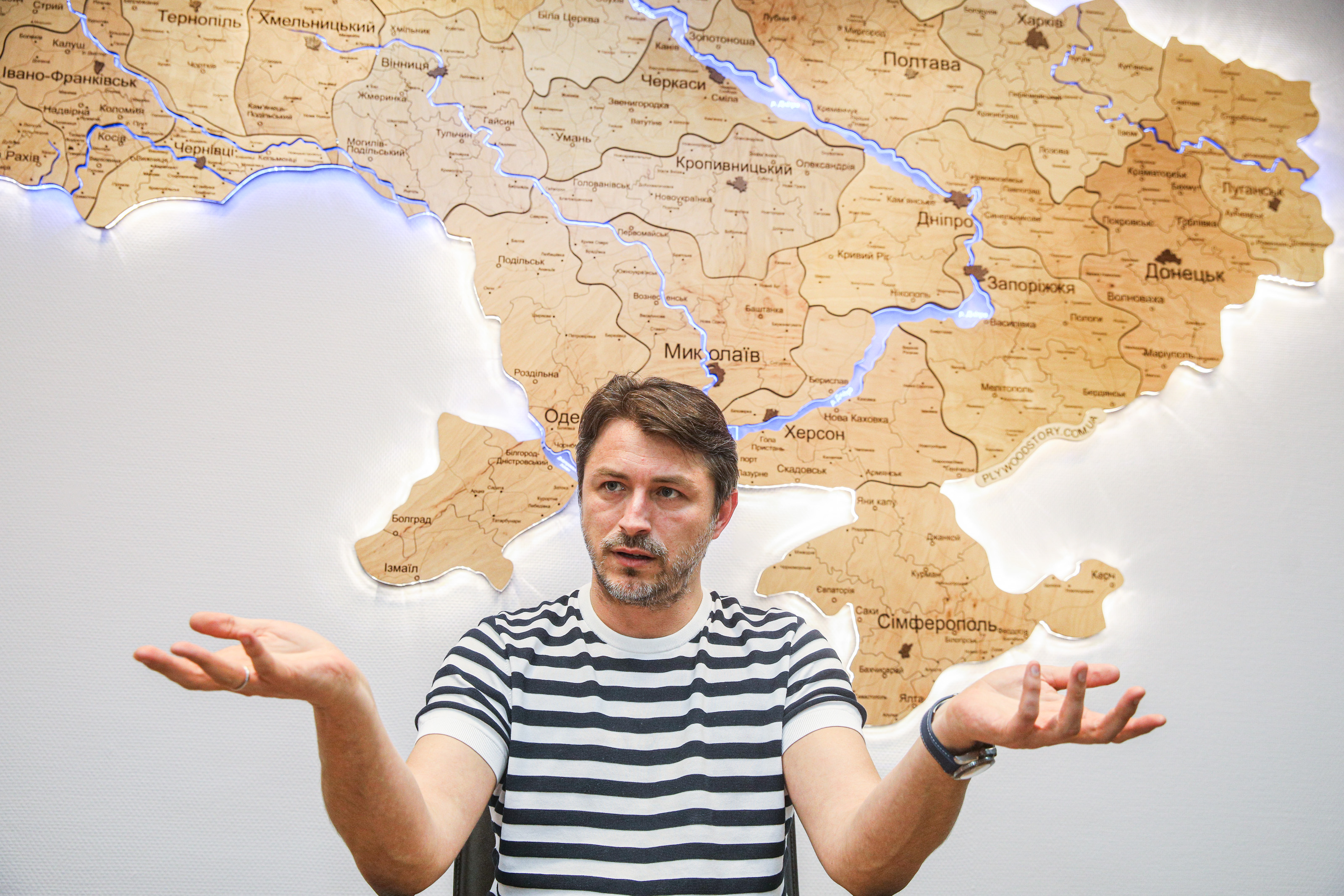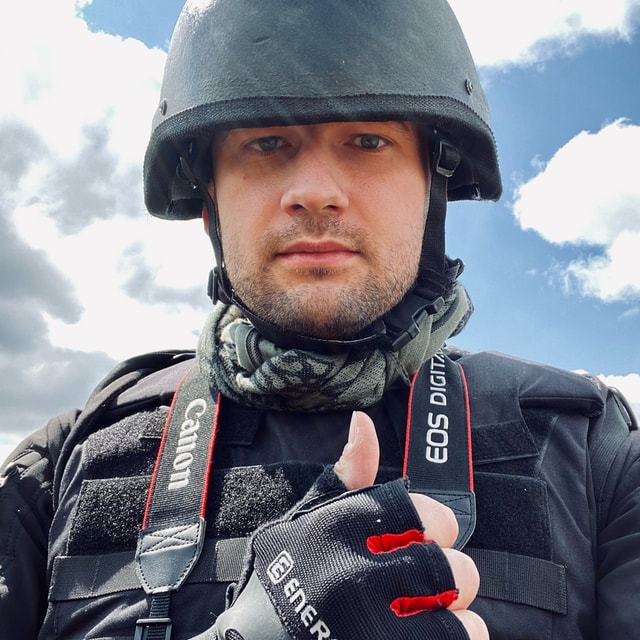Head of Come Back Alive foundation: ‘If you want to help Ukraine's military, buy equipment’

Today, everyone in Ukraine knows about the Come Back Alive charity.
It is everywhere — government agencies, mobile banking apps, and the biggest online marketplaces recommend it as the organization one should visit to help the Ukrainian military.
Come Back Alive became one of the symbols of Ukraine’s popular war effort, the biggest civilian fundraising trust purchasing military items, from warm socks to strike drones, worth millions of dollars.
The enormous toll of Russia’s full-scale invasion gave a fresh start to Ukraine’s grassroots volunteer movements, greatly supplementing the government-run war effort and often showing higher efficacy.
The civilian initiatives in Ukraine have gone as far as being officially entitled to strike contracts with foreign arms manufacturers — and procure heavy weaponry and advanced hardware to help counter Russia.
Yet, as the war enters its seventh month, the Ukrainian war shopping list gets longer and more complicated, says Taras Chmut, Come Back Alive’s director.
“In such a war, requirements are endless,” Chmut said in an interview with The Kyiv Independent.
“One can’t fill them all up. People die all the time, something gets destroyed and lost all the time. It’s a process.”
“(The war) has a beginning — and it has our victory as the ending. The distance between those things is us (providing) all the time.”
Popular effort
Civilian charities took the lead in 2014 to help revive Ukraine’s Armed Forces, disorganized and poorly supplied, in the wake of Russia’s invasion of Crimea and later the Donbas.
The volunteer movement took heavy lifting, supplying food, combat gear, providing tactical medical training, and veteran support.
Back then, the government’s war effort was often barely effective and responsive to the military’s day-to-day needs.
Come Back Alive was created in May 2014, as an entity that was able to properly organize and stream in the right direction the patriotic surge of hundreds of thousands of Ukrainians willing to buy equipment and save the lives of Ukrainian soldiers.
30-year-old Chmut, a former marine, recalls this nationwide movement as the reaction of a sound civil society that “decided to act proactively and do something about the war instead of staying idle.”
Now, over the last eight years, the situation has dramatically improved, he says. But today, charities supporting the military are still needed.
“With a war of such scale, with all the needs in terms of power, resources, hardware, losses since Feb. 24, the government can’t compensate for those things fast enough, no matter how hard it tries,” Chmut says.
“And in this case, just like in 2014, society joins the state in combating the aggressor,” he adds.
“The volunteer movement is not substituting the government, it’s a helping hand.”
Now Come Back Alive employs some 100 people in Kyiv and other cities.
The organization purchases and transfers equipment worth millions of dollars, typically communication equipment, daylight and nighttime optics, drones, cars, laptops, tablets, metal detectors, power generators, and many other things.
Furthermore, since 2014, the organization has advocated for defense reforms and veteran care.
Its instructors have trained over 10,000 Ukrainian military service members in landmine safety, aerial reconnaissance, sniper fire, high precision firing, and so on.
Russia's full-scale invasion in late February also triggered a boom of nationwide support for the military.
In the full-scale war’s first days, when the foundation’s employees worked day and night, daily donation flow reached Hr 200-300 million (up to $10 million).
According to the organization’s online financial reporting, Come Back Alive received nearly 1 million donations since February worth a total of Hr 4.4 billion ($150 million), including cryptocurrency contributions.
An average donation stands at Hr 4,359 ($120).
Nearly 30% of donations come from abroad, according to Chmut.

Over just the first week of September, the charity received over 22,510 donations worth Hr 56.5 million ($1.5 million).
“It’s just thanks to the massive inflow of popular donations from regular people that we can run large projects,” said Chmut.
Over just the first week of September, the organization reported purchasing 11 LC79 APC-SH Fighter2 armored cars worth 2.3 million euros for Ukraine’s 36th Naval Infantry Brigade.
Additionally, 104 Pegeout Landtrek and Mitsubishi L200 pickup trucks have been purchased for 2.6 million euros.
In March, Ukraine’s government authorized Come Back Alive as one of the entities capable of striking direct contacts with foreign arms manufacturers.
Thanks to this, in late July, Come Back Alive purchased a Bayraktar TB2 strike drone complex, which includes three drones and control stations, worth $16.5 million from Turkey’s Baykar, the charity’s biggest project so far.
Moreover, on Aug. 3, Chmut signed a memorandum with the Turkish manufacturer, saying that Come Back Alive aimed at long-run cooperation “as the Russian-Ukrainian war, unfortunately, is not going to end tomorrow.”
But as the director also admits, popular funding depends on Ukraine's economic situation, “which is having absolutely not the best time.”
‘Little inexpensive things’
The charity also goes as far as helping modernize Ukrainian air defense capabilities.
Shortly before the full-scale invasion, Chmut visited the Ozerne Airfield, home to Ukraine’s Air Force’s 39th Tactical Aviation Brigade in Zhytomyr Oblast.
The mission was to poll Ukrainian pilots on what could be done to improve their Sukhoi Su-27 fighters, but the project was canceled as Russian troops moved in from all sides.
“Sometimes, something small, inexpensive, when inserted into a big military machine, can render this machine more effective,” Chmut says.
“For instance, last year we invested a lot of funds…to modernize the Osa-AKM surface-to-air missile system,” he says. “For a regiment, that was about Hr 1.5-2 million ($60,000-$80,000).”
“A unit got a protected Panasonic laptop, a crew activities dash-cam, and the ability to receive target acquisition data via usual Motorola radio channels.”
As a result, Osa tactical surface-to-air missile systems, rather old weaponry, can receive information on their targets faster and more precisely.
Russians are not able to track these improvements. This made those units invisible until the very moment a missile is launched, improving their survivability.
“Having invested (only) Hr 2 million ($80,000) per regiment, we ended up having a higher hit precision on Feb. 24,” Chmut says.
Come Back Alive is not the only one in this field.
In late June, a charity led by entertainer Serhiy Prytula fundraised Hr 600 million ($16 million) within three days to buy three Bayraktar TB2 drones.
But Baykar in response vowed to provide Ukraine’s military with three drones at no cost. They arrived in Ukraine on Sept. 5.
Instead, the Prytula foundation spent the money to gain access to satellite image data run by Finnish-based company ICEYE. It also purchased one of its satellites to surveil Russia’s military activity in Ukraine.
As Chmut says, there is no real competition between the country’s two biggest military-supporting charities — instead, they often coordinate their activities to avoid collisions. In Dnipro, they even share a local office building.
But even with such widespread involvement, the Ukrainian government and civilians never get to provide the fighting military with 100% of what it needs.
Especially now that winter is coming, and requirements change all the time.
The military does not have an urgent need for body armor and helmets. But it always needs more communication equipment, more means to ensure better mobility of troops, and more optical instruments.
“If you really want to help the military, just buy communications equipment,” he says.
“Our war is about freedom and what is going to shape the world — whether it’s the rule of law or (Russia’s) rule of force, where (Russia) can do whatever it wants.”
“So if one wants to help Ukraine — this can be done via various charities that help the wounded or refugees,” he adds. “We’re working for the sake of victory in this war.”
___________________________________
Note from the author:
Hello! My name is Illia Ponomarenko, the guy who wrote this piece for you.
I hope you found it useful and interesting. I work day and night to bring you quality stories from Ukraine, where Russia is waging the biggest war in Europe since WWII. My little homeland, Donbas, is now the site of the worst fighting. We are helping to keep the world informed about Russian aggression. But I also need help from every one of you — to support Ukrainian wartime journalism by donating to The Kyiv Independent and becoming our patron. Together, we can help bring peace to Ukraine.














